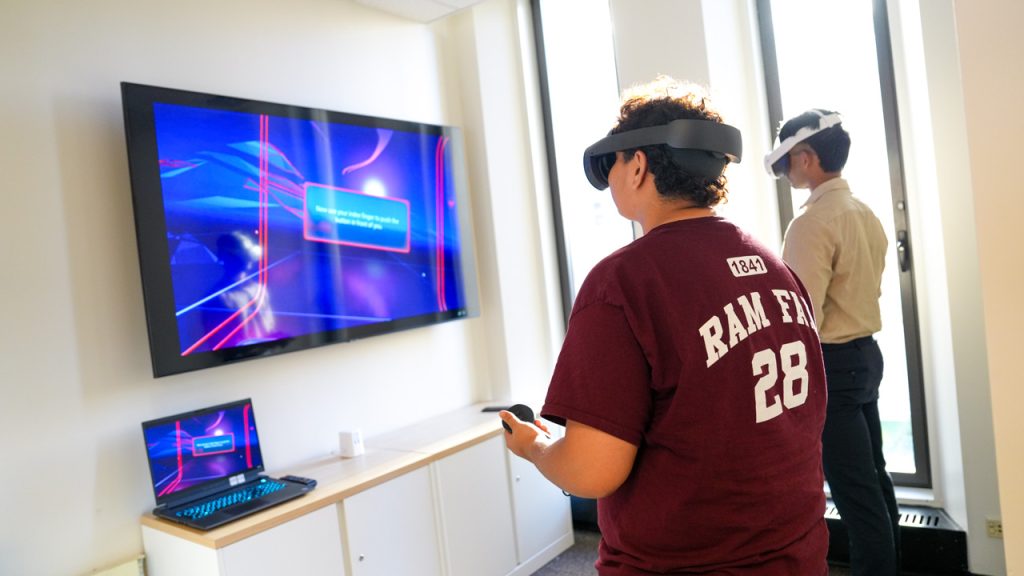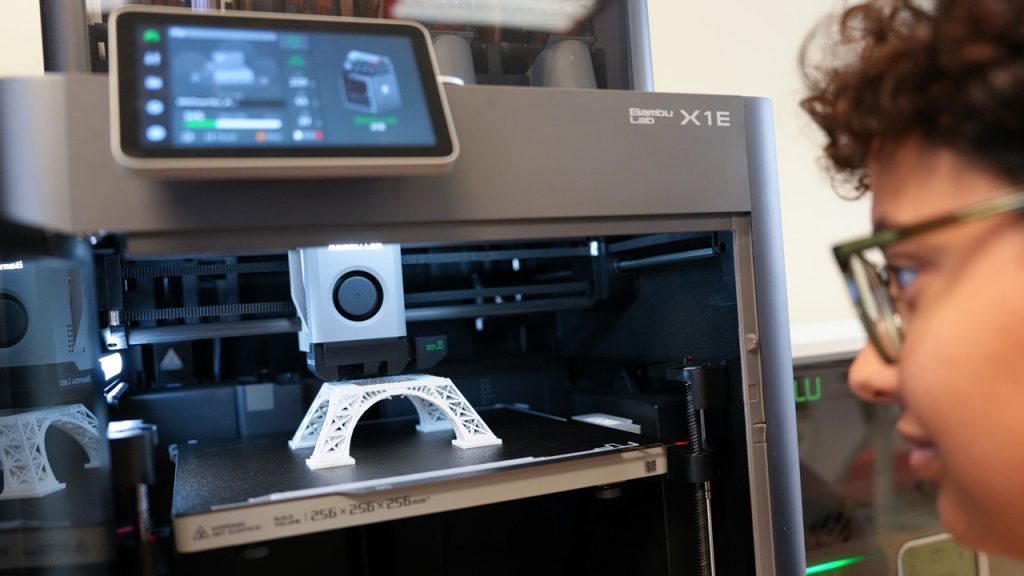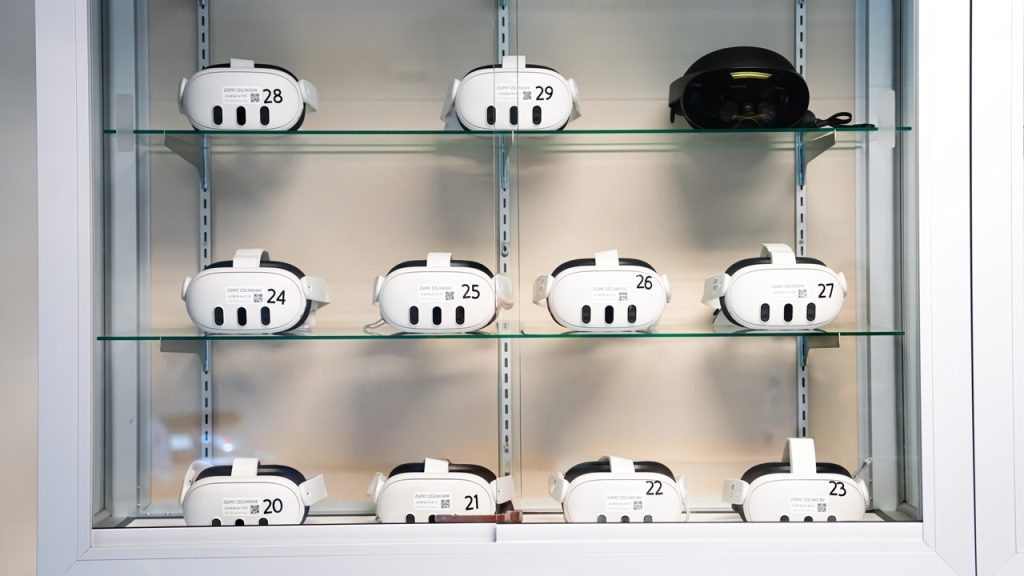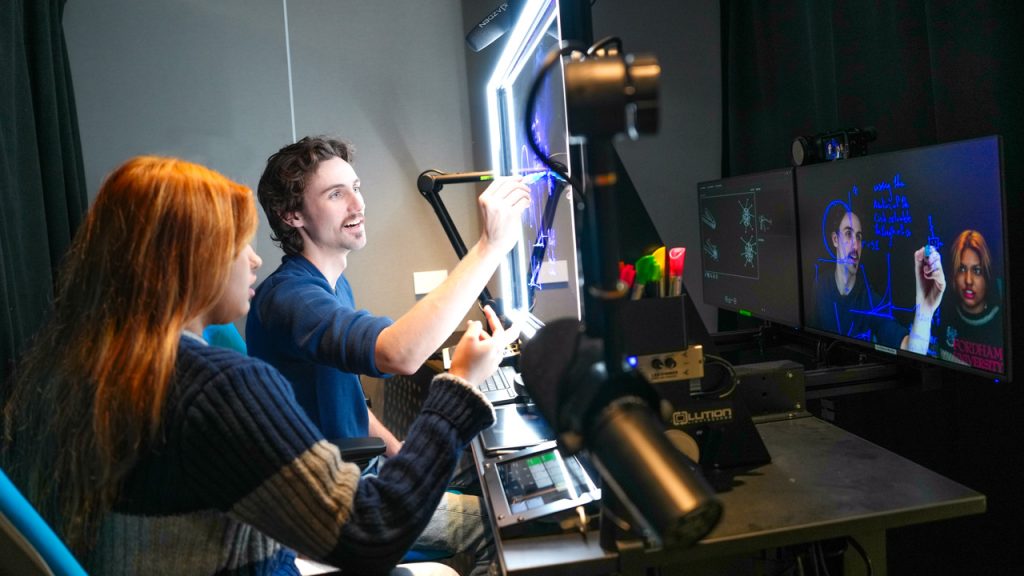Fordham’s newest LITE Center is ready for prime time.
The Lincoln Center Learning & Innovative Technology Environment, located on the fourth floor of Lowenstein in room 416, was operating at full tilt as of last Thursday. A miniature, plastic model of the Eiffel Tower was coming to life in the belly of a 3D printer. Students with virtual reality goggles practiced hurling imaginary objects across a giant flat-screen. And inside the brand-new video/podcasting studio, a pair of LITE’s work-study students demonstrated how to record a video while jotting notes on a screen, weatherman-style.
“People say when they walk into the space, they feel more creative—that LITE lets them think outside the box and be able to apply these technologies in their classes,” said Nicole Zeidan, Ed.D., assistant director of emerging educational technologies and learning space design. She helps connect LITE’s resources to students and faculty, such as Assistant Professor of Art History Nushelle de Silva, Ph.D.

first-year student Elliot Ismail
Virtual Reality for Museum Studies
Earlier this fall, de Silva wanted her Museum Architecture students to see how a museum experience changes when you “visit” it virtually. Using VR headsets at Rose HIll’s LITE, students were able to view the “Mona Lisa” up close without the hordes of tourists in the Louvre.
With this technology now available at Lincoln Center, said de Silva, “ I could turn this into homework. And then we would have the whole of the class time to talk about that experience.”

Printing Sturdy Replicas of Fragile Artifacts
The tools at the LITE Center in Lowenstein and its counterpart at Rose Hill are designed to make classes experiential and creative work more accessible. Students can fashion theater costumes with LITE’s sewing machines or repair objects with its soldering equipment. A too-fragile-to-touch artifact can be 3D scanned, then 3D printed to create a durable facsimile, like the medieval seals the LITE Center recreated for Center for Medieval Studies Director Nicholas Paul. “The originals … are made out of wax and, obviously, extremely old, so having copies that we can pass around and look at closely is really useful in classes,” he said.
Fleur Eshghi, Ed.D., associate vice president of educational technology research computing, said she thinks many academic departments will make good use of the center.
“We have been looking for space for Lincoln Center to build the same facilities [as Rose Hill],” she said. “And we have finally succeeded … I’m extremely excited.”

Letting the Light in
Nicola Terzulli, learning space design lead for the Office of Technology, made the most of Lincoln Center’s light-filled space when designing the different stations.
“Lowenstein has those iconic windows for each floor,” said Terzulli, so he found a manufacturer who could soundproof a podcasting room but keep the glass walls. When the studio is not in use, you can see through it. But should you need privacy—or want to use the room to record a media-rich lesson for Panopto, Fordham’s platform for video classes—you just draw the room’s thick black curtains to enclose it.
Terzulli even used all-glass cabinets to make the tools at Lincoln Center’s LITE easy to see.
“We wanted as much glass as possible … so people when they walk in, they see [these tools]and they’re like, ‘Hey, what’s that? Can I do that? Can I use that?’”
For details on the features and hours of the Lincoln Center and the Rose Hill LITE Centers, visit their site.

